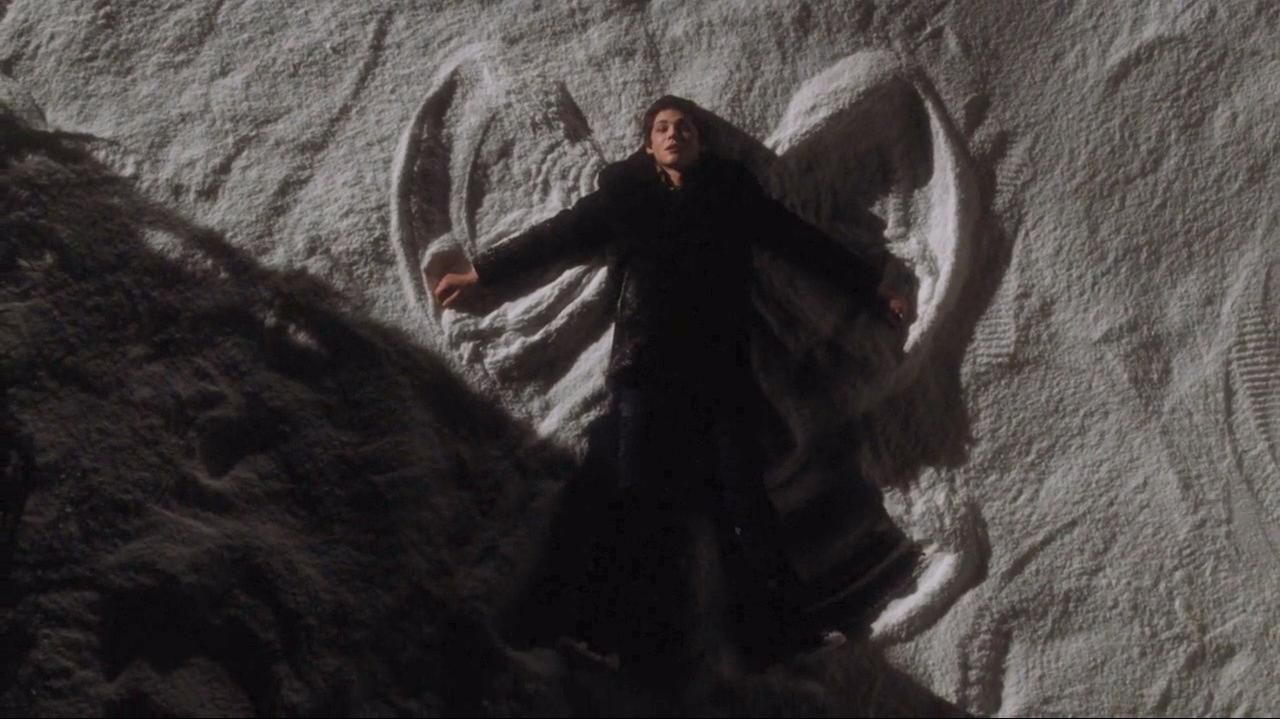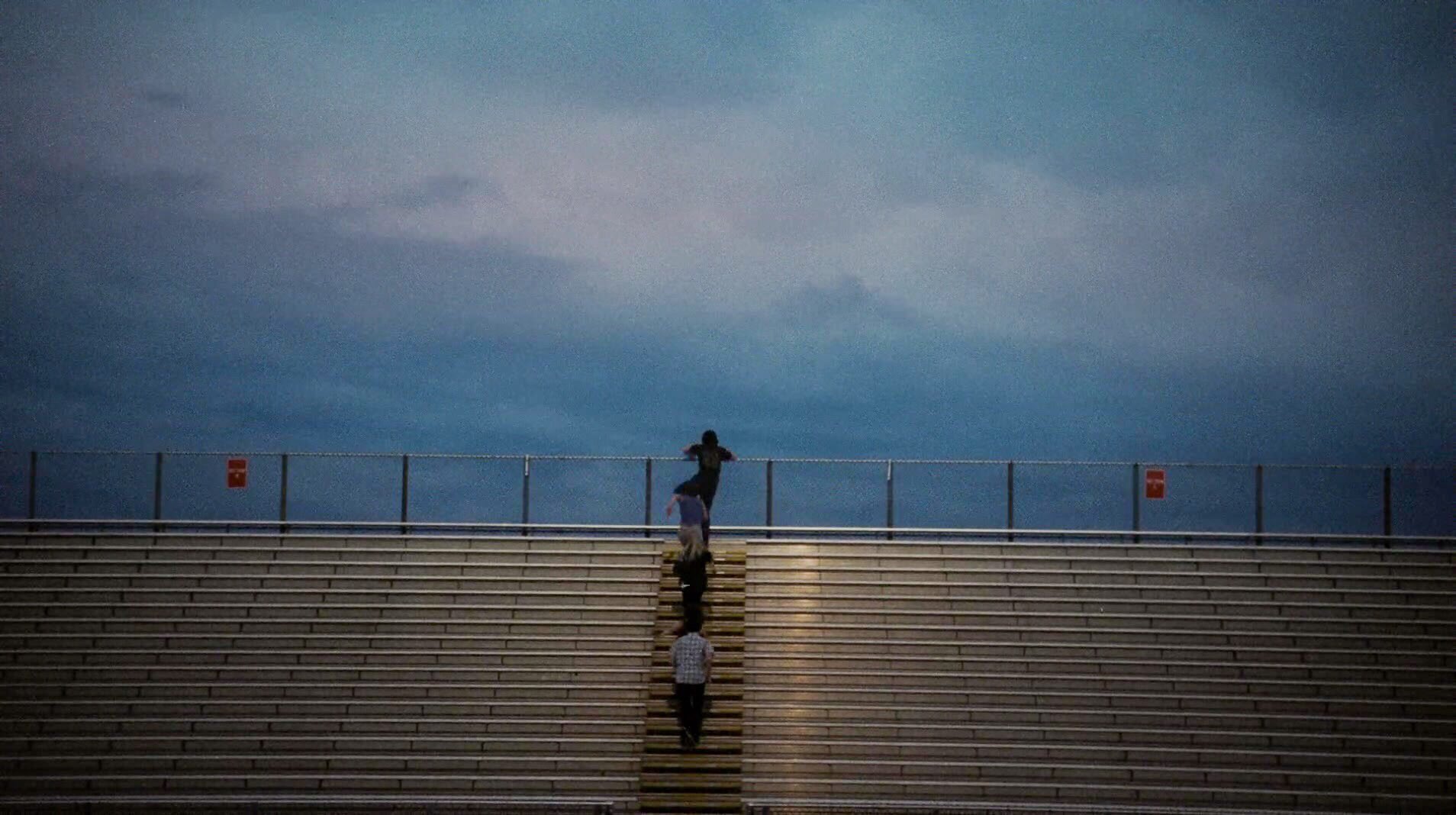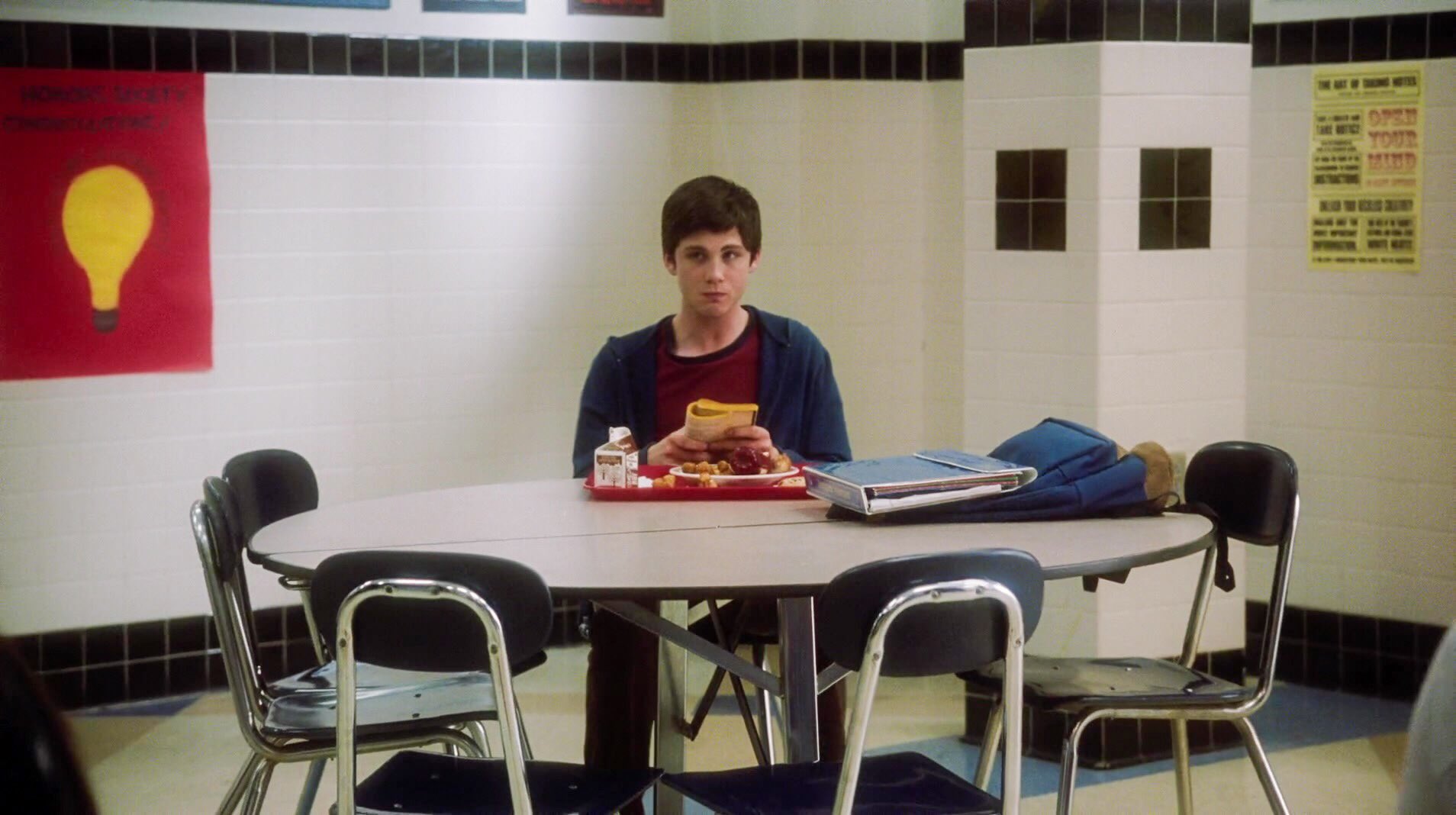Mis-en-Scene
Mis-en-Scene
The Perks of Being a Wallflower (2012) Directed by Stephan Chbosky
The use of mis-en-scene was used to explain Charlie's background and develop his character. The setting is a snowy night in December, and the location is a ground covered in snow. Charlie is encapsulated by white snow as he makes a snow angel, representing his innocence since this activity is typically for children, and the color white is associated with purity. It represents the childhood he lost, the trauma he experienced, and wanting to dissociate from the world of depression and anxiety that has burdened him. He also appears to be lonely, being isolated in a vast amount of snow at night when nobody is around, and it seems to be reckless, symbolizing his lack of awareness and safety for himself. His costume explains his feelings during this time. For example, he wears a completely black outfit, which shows him mourning for his late aunt, who died around this time and molested him. The fact he is wearing black and honoring her shows his attachment to her and the post-traumatic stress disorder (PTSD) that still lives with him after many years, even after what she inflicted on him. It shows he is not free from the pain he still has and is trapped in the trauma he suffered when he was a child. Additionally, the white lighting on his upper body that causes higher contrast allows the audience to focus on his emotions and the snow angel framed around him and his state of daze.
Mis-en-scene plays a large part in the ending scene of The Perks of Being a Wallflower and Charlie's character development. He is first introduced as an anxiety-filled, lonely high schooler but slowly blossoms into a carefree person. The use of lighting through the tunnel really demonstrates this as they drive through it, and the light goes from bright to dim to represent the ups and downs of his life, but he maintains the same smile and puts his hands up, representing that he will make it through the hardships of life. The recklessness of standing in the trunk of a truck shows his desire to break free from his anxiety and live freely. The plain costume he wears is surrounded by spectacular scenery of a fast-moving tunnel sequence, and alternating radiant and faint lighting makes him stand out as if he doesn't belong, but his mannerism of putting his hands up and enjoying the moment makes up for it. He is growing into a new person and breaking away from his previous distraught self. Utilizing mis-en-scene was the perfect way to end this movie and really establish the growth of the protagonist.
The adventure that the main characters, Charlie, Patrick, Sam, Mary Elizabeth, and Alice, experience throughout the movie is represented by the mis-en-scene of this one moment. The location is the school bleachers, with the setting being on the last day of school during sunset. They are all walking upstairs, which helps represent their journey of finding themselves and their upward adventure of finding true happiness and moving on with their lives. The sunset scenery symbolizes the ending of their journey and high school career, except for Charlie. Charlie is specifically placed last because he has not graduated high school yet, so although he completed his experience with them, he has not yet finished his schooling. Patrick and Sam are at the start of the line that represents them guiding Charlie and introducing him to a new world of friendship and that he can be loved. They are wearing such different things, which demonstrates how they are so individually dissimilar, but they still manage to be friends. They seem so small in the huge bleachers, showing how minimal they are in this world, yet they still manage to make such a big impact on the lives around them.
The mis-en-scene in this scene helps foreshadow Charlie's future. The four chairs around help predict his future friends, which are Patrick, Sam, Mary Elizabeth, and Alice, who in the future will sit at this table and eat lunch with him in the cafeteria. It is common for movies about high school to use lunch scenes to illustrate how many friends they have and their status. It also helps emphasize his loneliness and lack of friends as he is surrounded by so many seats, but nobody is sitting with him. He has a book prop that shows he is a bit of a nerd and doesn't have friends to talk to. The primary colors of his costume and surrounding him help him stand out. He is wearing a red shirt with a blue jacket and holding a yellowish book. This makes him stick out like a sore thumb and the odd one out as he is surrounded by these bland walls. The fact the scene uses only primary colors might also symbolize that he is lonely and has not explored the world, like being "unmixed" as no secondary colors are seen like he has not had the chance to meet new people and develop his own personal self.









Comments
Post a Comment